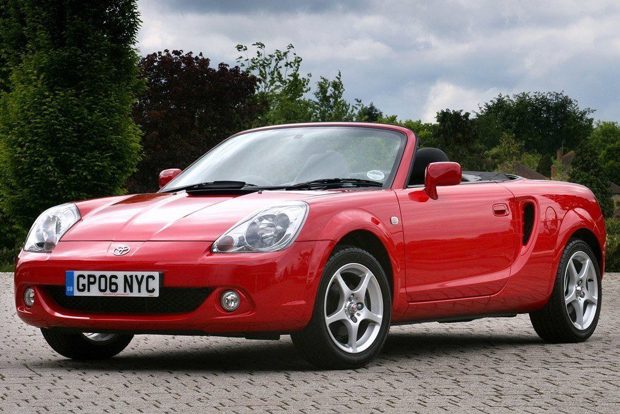Future Classic Friday: Toyota MR2 Mk3

It will never win any awards for practicality, but the third generation Toyota MR2 is still a great car - albeit one with some very obvious flaws.
Launched in 2000 (or 1999 in its home market of Japan), the car was almost identical to the MR-S concept shown at the 1997 Tokyo Motor Show. Indeed, the newcomer was sold as the MRS in Japan, rather than MR2.
In many ways, the difference in name was logical, for as a concept the new Toyota MR2 was very different to the second generation car that it replaced, the only real commonality between the two being the mid-engined layout.
While the earlier car had evolved from sports car into sports-oriented grand tourer (and an extremely pretty one, at that), the new model was a back-to-basics roadster in the mould of the Lotus Elise.
The car’s chief engineer, Tadashi Nakagawa, said it would break 'the cycle of growth', referring to the habit of successive vehicle generations getting ever larger.
Everything about the new car would be smaller – overall proportions, engine size, power, kerb weight and price. It would also be much simpler to produce, with all markets sharing a similar specification.
True to his word, when it was launched, the Toyota MR2 weighed just 960kg - less than a MINI or, indeed, a Toyota MR2 Mk1. One of the main reasons behind this was the removal of the rear bulkhead, with the torsional rigidity of the rear end incorporated into the design of the bodywork.

From a cost and weight perspective, a great idea, but it did mean that the Toyota MR2 went without any form of a boot.
Instead, buyers got a 78-litre storage compartment behind the seats (about the same size as a contemporary Range Rover’s glove compartment) and enough room for a couple of small bags in the front hatch alongside the spare wheel. For road trips, then, you had to travel light.
The line up was simplified, too. Only one engine was used: an all-alloy 1.8-litre DOHC 16v VVT-i unit that was also used in the seventh-generation Toyota Celica. It developed 138bhp, which may not sound huge, but thanks to the Toyota MR2’s diminutive mass, it had the best power-to-weight ratio in its class.
In sports car terms, then, the third generation Toyota MR2 ticked all the boxes. It had dart-like responses, a revvy engine and was quick off the mark. The steering was sharp and it loved being thrown around.
On-the-limit handling was a touch unpredictable, but overall, it was a lively and entertaining performance car for not a huge amount of outlay. Just what a sports car should be.
Today, they’re cheap as chips. Less than a grand will get you behind the wheel of well-used example, and they’re more fun and more durable than an MGF or a Mazda MX-5. Such pleasures come with an element of compromise, of course, but that's just a part of classic car ownership. Find a classic Toyota for sale.

